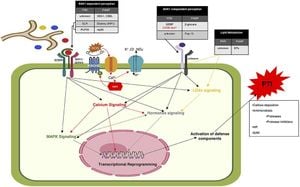The combination of liraglutide and high-intensity interval training (HIIT) shows potential benefits for cardiac function and the progression of heart failure among rats with diabetic cardiomyopathy (DCM). A study conducted by researchers at Tianjin University of Sport explored how this dual therapy reverses damage to the heart and improves overall health outcomes for diabetic rats.
Diabetic cardiomyopathy is characterized by structural and functional cardiac abnormalities due to diabetes, independent of other heart diseases. The research highlighted the role of glucagon-like peptide-1 receptor agonists (GLP-1Ras), particularly liraglutide, known for reducing cardiovascular events and preserving cardiac health. Similarly, studies have shown HIIT helps improve cardiac function, but less is known about their combined effects.
To induce DCM, the researchers used male Wistar rats subjected to high-fat diets and low-dose streptozotocin (STZ), leading to hyperglycemia and cardiac alterations. After 8 weeks of treatment combining liraglutide injections and HIIT, the researchers assessed multiple cardiac functions, including systolic and diastolic performance.
Significant findings from the study indicated improvements across various cardiac metrics; the combination therapy was particularly effective at alleviating eccentric hypertrophy, reducing fibrosis, and maintaining cardiac contractile proteins. Notably, DCM rats exhibited serious heart function impairments, but those undergoing the combined therapy experienced marked improvements.
One researcher noted, "All interventions significantly reversed the development of heart failure by alleviating the disruption of contractile apparatus." This highlights the importance of targeting both the underlying diabetic condition and the mechanical properties of heart function through combined treatments.
Histological examinations and measurements indicated reversal of the abnormal shift from adult to fetal myosin heavy chain isoforms, alongside reductions in relevant signaling proteins known to contribute to muscle wasting. These responses suggest not only symptom management but potential restoration of normal heart function.
Further exploring the benefits of this dual approach, subsequent analysis demonstrated heightened cardiac GLP-1 receptor expression, enhancing sensitivity to GLP-1 and optimizing the positive effects on metabolism and cardiac health.
The findings of this study showcase the immense potential of combining liraglutide and HIIT therapy, particularly as diabetes and cardiovascular diseases continue to intersect increasingly among global populations. The authors conclude, "These findings demonstrate the potential of combined liraglutide and HIIT treatments to advance our approach to managing diabetic cardiomyopathy." Future research may expand on dosage variations and longer treatment protocols to reinforce cardiac benefits and assess varying impacts based on patient demographics.
Overall, the synergy of liraglutide and HIIT could offer hope to improve the management of diabetic cardiomyopathy, bolstering our therapeutic toolkit for addressing complex heart failure scenarios.



